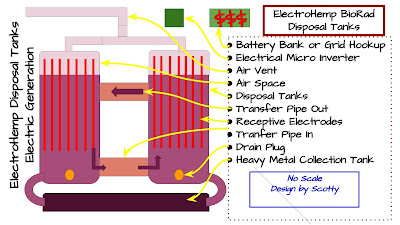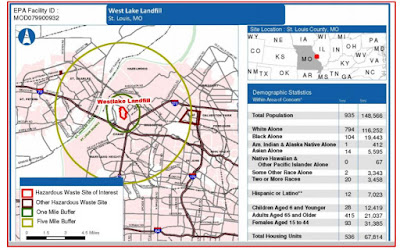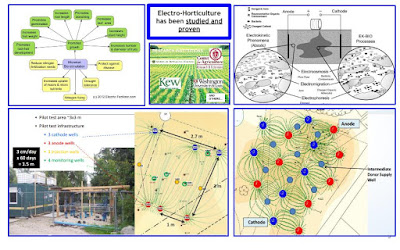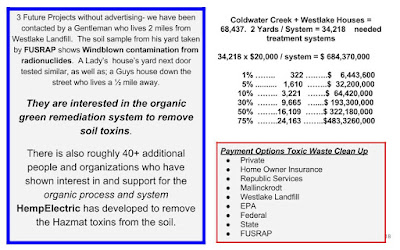Missouri Agribusiness and Farmers MOhemp Energy wants to work with you and is actively seeking: Partners, Investors, Advisers, Team Members, Farmers: who are interested in: Biomass, Biofuels, Hemp Lignin, Energy Conserving Building Products, Hemp Oil, Hemp Fibers, Medical Cannabis, Phytoremediation,
Search This Blog
Showing posts with label Coldwater Creek. Show all posts
Showing posts with label Coldwater Creek. Show all posts
Sunday, March 13, 2016
ElectroHemp Pitchdeck Images
Labels:
Coldwater Creek,
David Wechsler,
ElectroHemp Pitch Deck Images,
Green Remediation,
Nuclear Waste,
Phytoextraction,
Phytoremediation,
Remediation,
West Lake Landfill
I believe the power is in our hands to build a world that will benefit everyone.
Tuesday, March 1, 2016
MOhemp converts toxic Rads to Clean Energy
Last night while participating in the #STLChat about the Nuclear Contamination of the Westlake Landfill was just the break I needed.
The time spent not absorbed on the green remediation plan allowed my mind to put the remaining pieces of the 5 Stage Phytoremediation project in place.
The end goal has always been to create clean energy from the Biomass resources. Which under normal circumstances could be done fairly easily.
With the addition of adding Electrokinetics which increases both the heavy metal movement in the soil and phytoremediation of heavy metal uptake in the plants was going to eliminate any Biomass end use due to the advanced heavy metal absorption within the plant.
That had previously left me in a quandary. I wasn't for sure on what to do with all the toxic plant matter - burning it for fuel was not an option, as it would have once again turned the nuclear radiation airborne.
Through hours of research, a few hints from the University of Missouri, and believe it or not a kids science fair project- sparked the idea which aligned the final end use of the phytoremediation plants and allows MOhemp to turn these toxic nuclear radiation molecules into a clean energy source of electricity!
This process also renders the Nuclear Toxins inert and non toxic!
Stay tuned for more details!
update Mar 18, 2016 ElectroHemp BioRad Hazardous Waste Disposal and Clean Energy Generation Diagram
 | ||
| ElectroHemp BioRad Hazardous Waste Disposal and Clean Energy Generation Diagram |
Labels:
clean energy,
Coldwater Creek,
David Wechsler,
Electro-Horticulture,
Kenaf for Phytroremediation,
Phytoextraction,
Phytoremediation,
West Lake Landfill
I believe the power is in our hands to build a world that will benefit everyone.
Tuesday, February 16, 2016
MOhemp Hazmat Phytoremediation Diagrams
___________The following diagrams are examples of the proposed
MOhemp Hazmat 5 stage phytoremediation treatment train
This couples the benefits of low cost phytoremediation and phytoextraction techniques for the Westlake Landfill and Coldwater Creek areas to naturally remove hazmat soil contaminants.
Field Phytoremediation Layout Diagrams
 |
| MOhemp Hazmat Phytoremediation Diagram Field Layout Treatment Train |
Hillside and Low Slope Diagrams
 |
| MOhemp Hazmat Diagram Modified Riparian Buffer Design with Containment Membrane |
 |
| MOhemp Hazmat Phytoremediation Riparian Buffer Diagram |
 |
| MOhemp Hazmat Sketch Phytoremediation 5 Stage Treatment Train |
The landfill is divided into multiple sectors, within which are two operable units (OU), OU-1 and OU-2. In addition to the radioactivity from the dumped barium sulfate cake, soil samples also indicate the presence of many more radioactive materials, including uranium, thorium, and elements resulting from their decay.
| By Debbie Kring (Environmental Protection Agency) [Public domain], via Wikimedia Commons |
- OU-1 covers 940 cubic yards (720 m3) on the surface (based on soil depth of 6 inches or 150 millimetres) and 24,000 cubic yards (18,000 m3) subsurface
- OU-2 covers 8,700 cubic yards (6,700 m3) on the surface and 109,000 cubic yards (83,000 m3) subsurface
 |
| Coldwater Creek FUSRAP Map Toxic Storage Areas |
Labels:
Coldwater Creek,
Field Layout,
Kenaf for Phytroremediation,
Kenaf Riparian Buffer,
MOhemp Hazmat,
Phytoextraction,
Phytoremediation,
Riparian Buffer,
West Lake Landfill
I believe the power is in our hands to build a world that will benefit everyone.
Thursday, February 11, 2016
West Lake story: An underground fire, radioactive waste, and governmental failure
West Lake story: An underground fire, radioactive waste, and governmental failure: On July 16, 1973, 28 years to the day after the first nuclear weapon was exploded at Alamogordo, New Mexico, a line of dump trucks containing the detritus from the uranium used to make plutonium for the test bomb showed up at the West Lake landfill in Bridgeton, Missouri. Assuming the trucks were loaded with clean fill, the landfill superintendent waved them through without charging a dumping fee.
A truck driver said later that he and others used the black stuff in their home gardens.
By October several thousand shipments were illegally dumped at the landfill in north St Louis
Back to the Article West Lake story: An underground fire, radioactive waste, and governmental failure
It’s not far-fetched to conclude that there are parallels between the West Lake waste problem—created and exacerbated by decades of negligence and denial by the US nuclear weapons program and the agencies responsible for protecting people from its harmful legacy—and the disaster in Flint, Michigan, where citizens have been poisoned by lead-laced drinking water, and their public officials have been slow to respond. In fact, on January 27, the editorial board of the St. Louis Post Dispatch explicitly pointed out those parallels, concluding that “too often, people without power and clout don’t count with government officials. A parallel situation exists here with Bridgeton’s West Lake landfill... After seeing what happened in Flint, it comes as no surprise that they doubt government’s will to find a permanent solution.”
Thank You for stopping by-Share and Comment below.
If additional information in needed or you have a question let me know. Together we can make a difference and create a future that will benefit everyone.
A truck driver said later that he and others used the black stuff in their home gardens.
 |
| Previously Undisclosed Radioactive Dump Site Location in the StLouis Region |
Green had worked from 1946 until about 1958 for several small trucking companies that hauled materials for Mallinckrodt Chemical Works in north St. Louis. The company processed uranium for the federal government under contract to the Atomic Energy Commission.
Photo added by Scotty
Supporting Article: http://blog.mohempenergy.org/2016/01/manhattan-project-nuclear-waste.htmlBack to the Article West Lake story: An underground fire, radioactive waste, and governmental failure
It’s not far-fetched to conclude that there are parallels between the West Lake waste problem—created and exacerbated by decades of negligence and denial by the US nuclear weapons program and the agencies responsible for protecting people from its harmful legacy—and the disaster in Flint, Michigan, where citizens have been poisoned by lead-laced drinking water, and their public officials have been slow to respond. In fact, on January 27, the editorial board of the St. Louis Post Dispatch explicitly pointed out those parallels, concluding that “too often, people without power and clout don’t count with government officials. A parallel situation exists here with Bridgeton’s West Lake landfill... After seeing what happened in Flint, it comes as no surprise that they doubt government’s will to find a permanent solution.”
Responsibility for the radioactive legacy in north St. Louis County rests squarely on the US government, because the problem there was born of production of the first nuclear weapons. At minimum, the first order of business should be for the Corps of Engineers to remove as much of the West Lake landfill wastes as possible and contain the rest, to protect nearby communities and the drinking water they draw from the Missouri River.
Thank You for stopping by-Share and Comment below.
If additional information in needed or you have a question let me know. Together we can make a difference and create a future that will benefit everyone.
Labels:
Cold Water Creek,
Coldwater Creek,
EPA,
Kenaf for Phytroremediation,
Phytoextraction,
Phytoremediation,
Tom Green,
W,
West Lake Landfill
I believe the power is in our hands to build a world that will benefit everyone.
Friday, January 8, 2016
Hazmat Crew will be visiting nuclear waste dump sites this coming week
MOhemp Energy Hazmat crew will be visiting these and other undisclosed nuclear waste dump sites, nuclear staging sites in the St Louis Region and will be testing for radioactive contamination.
snippet from article...As they talked in 1979, Green had no way of knowing that nearly a decade later his comments would lead to the discovery and testing of a potentially contaminated site long forgotten by federal officials.
Green, then 63, told how he had driven truckloads of heavy uranium ingots across the McKinley Bridge to a plant in Madison during the latter half of the 1950s.
He described how the barrel-shaped ingots, 18 inches in diameter and height, were heated and reshaped at the plant at College and Weaver streets then operated by Dow Chemical Co.
Rediscovering 4 Forgotten Sites Government lost track of nuclear operations here and nationwide
Three months after his conversation with Drey in the hospital at 915 North Grand Boulevard, Green died of the cancer that had spread through his spine and intestines.
Now his account is prompting federal officials to take a new look into whether the former Dow plant may be contaminated.
The Madison plant is one of four ''forgotten'' sites the Post-Dispatch has discovered in the St. Louis area - sites where radioactive material was processed or stored in virtual secrecy after World War II.
There are dozens of such sites across the country that the federal government lost track of in the postwar years.
Department of Energy officials say there is no reason to believe that any of the four St. Louis-area sites poses a serious health threat. In at least one case - the former Tyson Valley powder plant in far west St. Louis County - there appears to be no threat at all.
But the agency plans to conduct tests within the next several months at the old Dow plant and at another Illinois site, the old General Casting plant in Granite City. The tests would determine whether buildings or equipment in those two places are contaminated by radioactivity.
The fourth local site would be hard to test. It was a large building - torn down eight years ago - at the former small-arms plant complex in north St. Louis.
Across the nation, federal and military investigators have spent millions of dollars over the last 14 years searching for and testing such ''forgotten'' sites.
Investigators admit they may not be able to identify all the factories, businesses and warehouses once involved in the country's top-secret production of nuclear arms.
What follows is a discussion of the four area sites that were lost in the shuffle:
The Old Dow Plant...
Tom Green had worked from 1946 until about 1958 for several small trucking companies that hauled materials for Mallinckrodt Chemical Works in north St. Louis. The company processed uranium for the federal government under contract to the Atomic Energy Commission.
About a year ago, Post-Dispatch reporters, examining the notes taken by Drey, noticed the references to Dow.
They were able to confirm through documents and interviews with former Mallinckrodt employees that experimental uranium extrusion work had been performed at Dow during the late 1950s.
But the Department of Energy had lost track of the experimental work.
''We found nothing regarding it. We can't find anything in (our) records,'' was the first response from Andrew Wallo, an Energy Department spokesman.
After an extensive search, the agency found two brief documents that mentioned the extrusion work at Dow.
''We hope to be conducting a radiological survey there later this year,'' Wallo said. ''You could get some contamination in the equipment or the building somewhere depending on the equipment and procedures they used.''
Wallo said he doubted there would be enough contamination to pose any serious health threat.
Dow operated the plant in Madison from 1954 to about 1969, employing about 850 workers at one point. The plant has been used primarily for the fabrication of aluminum and magnesium metals.
The plant's current operator is Spectrulite Consortium Inc., which took over the facility in late 1986. About 450 people now work there, producing rolled and extruded aluminum and magnesium products.
A Spectrulite spokesman said: ''We are aware of the interest being displayed in the incident in the past. But we are not commenting.''
Officials at Dow's corporate headquarters in Midland, Mich., could find no reference to the extrusion work done at the Madison plant.
Neither could Mallinckrodt. Raymond F. Bentele, president and chief executive at Mallinckrodt, said the company long ago had turned over to the government any records of work it performed for the old Atomic Energy Commission.
In the extrusion process, heated metal is reshaped by forcing it through a specially designed opening.
Uranium bars that ultimately would be used in nuclear reactors were extruded from cylindrical ingots of uranium metal. Each ingot weighed about 3,300 pounds and measured 18 inches in height and diameter.
The tests at Dow were intended to help Mallinckrodt perfect large-scale extrusion procedures for use at the Atomic Energy Commission's uranium processing plant near Weldon Spring.
Wallo said that contamination could have occurred during the heating and extrusion process if uranium oxide flaked off the metal and was carried as dust or small specks in the air.
''There is potential for there to be residual radioactive material above our guidelines, but we certainly don't expect any significant hazard or risk,'' he said.
The old Atomic Energy Commission generally required careful control of uranium metal for security reasons as well as safety, Wallo said. Also, he said, some degree of cleanup or decontamination normally was required once a job was completed.
Environmentalist Drey takes a more pessimistic view. She said she was concerned that uranium-oxide dust might have settled into cracks in floors, ceilings or concrete walls and still be present.
Robert Alvarez, a frequent DOE critic, said he would not place much confidence in the effectiveness of decontamination efforts at Dow or anywhere else during the late 1950s.
''I am unaware that there were any real standards for decontamination at all at that time,'' Alvarez said. He is an environmental research professional who is now on the staff of a Senate committee investigating the Energy Department's nuclear programs.
Granite City Plant...
On his death bed, Green also told Drey that uranium metals may have been taken for X-ray to the former Dow plant in Madison.
But Energy Department researchers, while checking that statement, found this work actually had been done in Granite City at the old General Castings plant.
From 1958 to about 1966, records show, uranium products from Mallinckrodt had been taken to the General Castings building to be examined for defects with equipment similar to a large X-ray machine.
Now the structure, isolated and no longer in use, is part of the Granite City Steel complex.
Wallo said the Energy Department hopes to test the building within the next few months.
Small Arms Plant...
In 1979, St. Louis officials bought and later razed a massive concrete building to make way for an industrial park. They had no way of knowing that tons of radioactive uranium material had been stored at the building after World War II.
Now, eight years after the demolition, no one seems to know for sure where all the rubble from the 725-foot-long structure was hauled and buried. Nor does anyone know whether the building became contaminated as a result of the products stored there.
The building - known as the ''proof house'' - was part of the Small Arms Plant complex off Goodfellow Boulevard in north St. Louis. It was used during World War II to test-fire machine-gun ammunition manufactured at the complex.
After the war, from 1947 to about 1950, the building was virtually stripped bare and later used by the old Atomic Energy Commission to store uranium products destined for government facilities producing nuclear fuel and weapons.
Workers using flashlights and often groping in the dark in the gutted firing ranges stacked metal and fiberboard containers of uranium products into thick-walled concrete corridors that ran through the building.
Sources interviewed by reporters said that most items stored in the proof house were finished products from Mallinckrodt awaiting shipment to government facilities at Oak Ridge, Tenn., and other locations.
Federal officials can find no documents relating to the storage.
Wallo of the Department of Energy said parts of the huge building could have become contaminated. But, he said, it is doubtful this ever would have posed any serious health risk.
Alvarez, the critic of the Energy Department, argued that the Energy Department lacks the documentation needed to draw valid conclusions about the site.
''If they weren't monitoring it, they can only guess,'' said Alvarez.
Mallinckrodt officials say they have no records about what was stored at the proof house; all such records had been turned over to the government in 1966.
Harold Thayer, retired Mallinckrodt board chairman, said he knew of no way to accurately gauge the volume of material that may have been stored in the cavernous building.
''There were tons of it,'' he said. He said the building was used for temporary storage of such materials as uranium tetrafluoride and uranium dioxide - commonly referred to then as green salt and brown oxide.
Others recalled seeing wooden crates containing uranium metal stored at the proof house, as well as empty 55-gallon drums. The materials were trucked from Mallinckrodt to the proof house and later shipped out by rail.
Photo added by Scotty |
Manhattan Project Nuclear Waste Shipping Container and Dump Site |
Thayer said Mallinckrodt used the building at the government's request. He said he did not know whether efforts were made to decontaminate the structure, or whether decontamination had even been needed.
Asked if there could have been contamination problems, Thayer said: ''I don't see how, unless somebody broke a container and spilled it or dropped it. It was all sealed products, as far as I know.''
I believe the power is in our hands to build a world that will benefit everyone.
Thursday, January 7, 2016
Manhattan Project Nuclear Waste Shipping Container and Dump Site
I received an interesting request from a fellow StLouis neighbor. Who asked me to run down information about this old 1940s shipping container that his Father saved from his time while working for Malicrodt hauling the dirt that contained the nuclear waste.
He mentioned Niagra Falls (this set off alarm bells in my head-Love Canal) so I did a quick google search and found some very interesting information. I was shocked to learn that: 37 million gallons of nuclear waste that was secretly dumped into drinking wells as reported by RALPH BLUMENTHAL of the New York Times
- The Army and a defense contractor dumped more than 37 million gallons of radioactive caustic wastes from the World War II atomic bomb project in shallow wells at Tonawanda, N.Y., near Buffalo, between 1944 and 1946, a New York State toxic waste task force reported yesterday.
- The disposal method was specifically chosen, the panel said, to hide the source of the contamination. The report, by the New York State Assembly Task Force on Toxic Substances, also offered new data to dispute an earlier Army denial of involvement in dumping at Love Canal in Niagara Falls, N.Y.
I'm not blind and I now can see the source for the 37 million gallons of radioactive waste was generated by the St Louis Involvement in the Manhattan Project.
 |
| Is this stain spilled nuclear waste on the shipping container? |
This has to be the reason his Father keep the shipping container as a souvenir and more proof of how deep the Rabbit Hole of the Nuclear Industry really goes.
I'm honestly worried for the safety and health of this Vietnam Veteran when I saw the stain on the shipping container. Is this stain spilled nuclear waste on the shipping container?
We had many conversations over the phone and I was taking mental notes as well as looking up previously undisclosed nuclear waste dump sites that his Father mentioned.
One of which could be the image below, that is located in a Region of St Louis.
 |
| Previously Undisclosed Radioactive Dump Site Location in the StLouis Region
MOhemp Energy Hazmat Crew will be visiting this site and many more that this Viet Nam Veteran believes are in the StLouis area.
|
Labels:
Bridgeton Landfill,
Coldwater Creek,
Latty Avenue,
Manhattan Project,
MOhemp Energy Hazmat,
St Loius Radioactive Dump Sites,
West Lake Landfill
I believe the power is in our hands to build a world that will benefit everyone.
Subscribe to:
Comments (Atom)

























